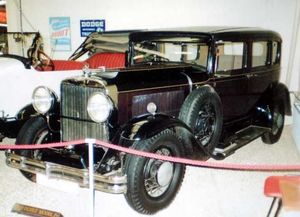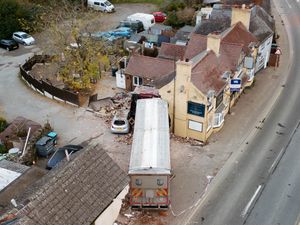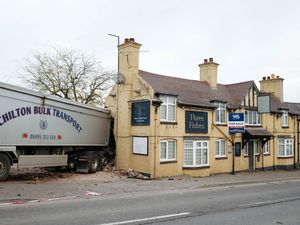Doble's steam-powered motor
There's nothing new in alternative fuel cars - steam was one real contender in the early days.

There's nothing new in alternative fuel cars - steam was one real contender in the early days.
One day in about 1946 David Mitchell was cycling home from Shrewsbury's Priory school through Frankwell when he came up behind a large saloon car which was stationary at the traffic lights.
What happened next stuck in his memory.
"When the lights changed, the car soundlessly accelerated at an astonishing speed, quite unlike anything I had ever seen before and leaving a lasting impression on a car-mad schoolboy. It's all about maximum torque at zero revs and that sort of thing," said Mr Mitchell, from Bayston Hill.
It was a steam car and almost certainly a Doble – quite possibly the personal car of Abner Doble, which Abner left behind at Shrewsbury's Sentinel Waggon Works, and which lay under dust sheets there for some years.
Memories of Doble's "Shrewsbury connection" have been reawakened by a recent Shropshire Star feature on steam cars which, in the early years of motoring, were serious competition for the petrol-driven variety.
Mr Mitchell said: "Abner Doble, who was one of the four brothers, worked at the then Sentinel Waggon Works for some years in the 1930s, bringing with him two steam cars from the States, one of which, possibly a Buick, may well have originally been petrol-engined and subsequently converted by Doble to steam. He claimed that with his flash boiler a car could be ready to go in 30 seconds from cold.
"I'm told this car was registered to the Sentinel Works and carried the Shropshire registration UX 8717 and remained in Shrewsbury after Abner returned to America.
"It was known to have been driven for some years by the Sentinel boss, a Mr Woodvine, who, I believe, could have lived at Russell Ridge, just off Roman Road. It was almost certainly this vehicle that caused me so much excitement just after the war and, of course, with petrol rationed, it would have made sense to use it."
And it may have been this car that Brian Lear, of Meole Brace, saw at the Sentinel garage when he began his apprenticeship at the works in 1949.
"I spotted this interesting-looking shape under the dust sheets. I asked my father what it was. He had worked there from 1919 until the day he died in 1953. He gave me a brief history of it.
"It was Abner Doble's personal car. He brought it over from America and was working closely with the Sentinel engineers developing the Sentinel steam waggon. I believe there was a prototype produced which never actually went into production due to the financial aspect and the very heavy road tax levied against them, plus the fact that diesel and petrol lorries had very quickly overtaken steam propulsion on the road."
Brian thinks the Doble car was left behind when Abner returned to America, and believes it had been under dust sheets at Sentinel through the war years. He said the boiler tubes had apparently burned out because of the fierce flame of the flash boiler.
"You could jump into the driving seat, ignite the flash boiler, and within two minutes you had enough steam to drive away in. This of course was a fierce flame which heated water very quickly, just a small amount to get you going. One of the boffins in the Sentinel development department had the bright idea that if they could make some new tubes up for the boiler of a new alloy they had discovered and used during the war on Spitfires, it might have been a viable proposition.
"The job was undertaken and the tubes were made and the boiler was refitted. I witnessed it being road tested up and down the works yard. It was a fascinating thing to watch. The exhaust steam did not come out chuff-chuff-chuff like a Stanley (steam car). The exhaust steam was captured and pushed back through what appeared to be a radiator – actually a condensor – on the front of the car and was condensed back into water and pumped back into the boiler.
"It started on petrol, and after half a minute or so it switched over to paraffin once it was warmed up.
The car was basically a big American Buick of its time, around about 1931.
"I believe it was sold to the managing director of some other engineering company. I know not who."
Mr Lear has a photo, sent to him by a friend, showing the same car at the Haynes International Motor Museum, near Yeovil.
"I think you will agree that it is a very handsome beast."
And Mr Mitchell says he has been told that in the late 1990s it turned up at the Castle Donington motor museum.
Unfortunately the trail has gone cold. Mike Penn, curatorial director at the Haynes museum, said the car had been owned by Wolfgang Gawor, a German industrialist living in Jersey who died about seven or eight years ago, but the Doble had been moved to the Donington motor museum long before his death.
However, that museum – the Donington Grand Prix Collection – told the Shropshire Star that it did not have it and suggested we contact Castle Donington Museum, where a spokeswoman said: "We're just a village museum. Our largest item is a mangle."





